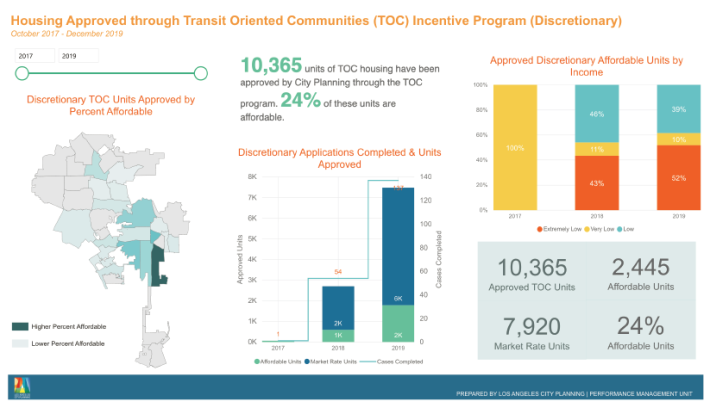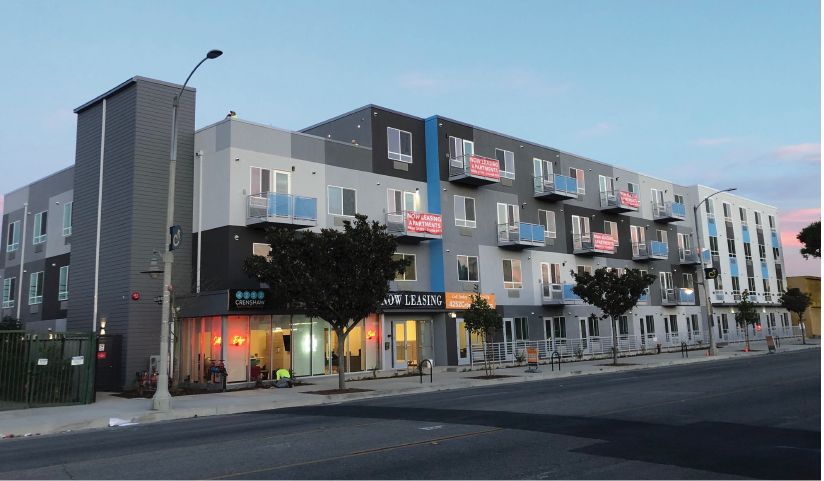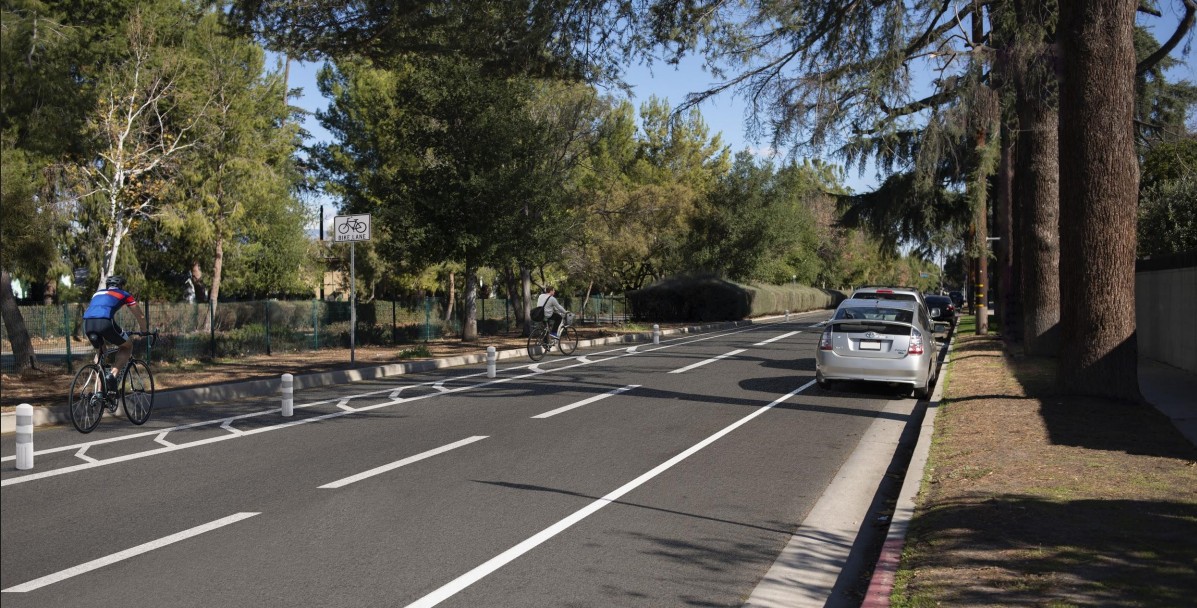This week the L.A. City Planning Department (DCP) released some figures on just how well the city's Transit Oriented Communities (TOC) Affordable Housing Incentive Program is working.
First, though - what is TOC? Transit-Oriented Communities incentives allow increased density in developments near transit in exchange for a developer including affordable housing. Only where affordable housing is added, TOC allows new developments to increase density, increase size (Floor Area Ratio - FAR), and/or reduce parking. TOC incentives apply only at high-quality transit stations/stops - where two frequent bus lines intersect and at rail stations. The closer to the transit stop, the more TOC incentives apply. Generally TOC permits market-rate housing (including mixed-use) projects to add on affordable units, though it also allows for all-affordable non-profit housing to build more units. For a more detailed description, see TOC explainers at SBLA or Legal Planet.
TOC was approved by a majority of city voters in 2016. It went into effect September 2017. At least somewhat based on misperceptions, TOC has received criticism from some reactionary homeowner interests. TOC is the target of a questionable Fix the City lawsuit that seeks to halt the program.
Maybe the nimbys are opposed to TOC because it really works.
According to DCP from 2017 through 2019, L.A. permitted 10,877 new affordable units and 58,437 new market-rate units (overall - TOC and non-TOC.) From 2018 to 2019, affordable housing units proposed are up 160%, and affordable housing units approved are up 130%. TOC is playing a big role in these increases. Since TOC started in late 2017, more than 27,000 new housing units have been permitted under the program.

More statistics from the City Planning website blog post:
In the last two years, [TOC] has driven much of the housing production in Los Angeles... In 2019 alone, more than 14,500 new units—42% of all proposed housing in the City—were proposed through the TOC Program.
As noted above, some TOC housing is all-affordable, but more often TOC permits market rate housing with affordable housing. These represent affordable units added to projects that otherwise would not have included them.
TOC incentives have also been successful at generating affordable housing: 5,400 of the units proposed through the program (20%) have been affordable, and half of those units are reserved for Extremely Low Income Angelenos (those earning $31,300 or less, for a household of four).
[For 2019] the TOC Incentive Program accounts for the largest share of affordable units of any City program. No other local incentive or planning approval has matched the net new number of affordable units produced by TOC...
Because TOC bonuses only apply to projects that include specified minimum levels of affordable housing, and because TOC requires minimum of one-to-one replacement of any affordable housing demolished, the program is targeted to minimize displacement. Despite these anti-displacement provisions, TOC is still resulting in some displacement. Notably, TOC is being used by developer Jeff Greene in his plans to redevelop Dorset Village. In that disaster, TOC has streamlined the approvals process, including minimizing opportunities for public input and City Council oversight. More from City Planning on how displacement has been minimized:
Seventeen new units are added to the housing pipeline for every existing unit lost due to construction of a TOC project, and two of those new units are restricted for low-income families. These numbers don’t reflect the 100% affordable projects that have also taken advantage of the TOC Incentive Program to contribute even more affordable units for low-income households.
As of 2019 Q4, 56% of all TOC projects have been located on commercial or vacant lots, meaning that they will not result in the loss of any housing units. An additional 14% of the total universe of TOC projects are likely to result in the replacement of a single-family home with multi-family apartments. We’re again talking about net new housing, an undeniable benefit of the program and the various ways it is helping to house more Angelenos.
The Planning Department further notes that, "The City has permitted nearly 111,000 housing units since July 1, 2013, surpassing the target set by the the City’s 2013-2021 Regional Housing Needs Assessment (RHNA)—as well as Mayor Eric Garcetti’s housing goal of permitting 100,000 new units by 2021" but stresses that "there is still much work to be done."
TOC can't solve all of L.A.'s problems, but the well-targeted program is making an important difference addresses two big issues: a housing crisis and a need to reduce car use to curb emissions contributing to the climate emergency.







